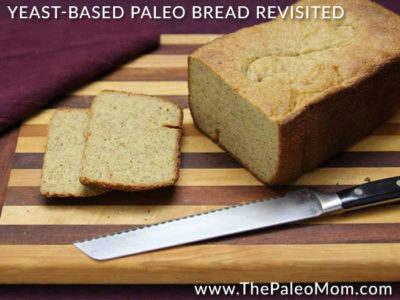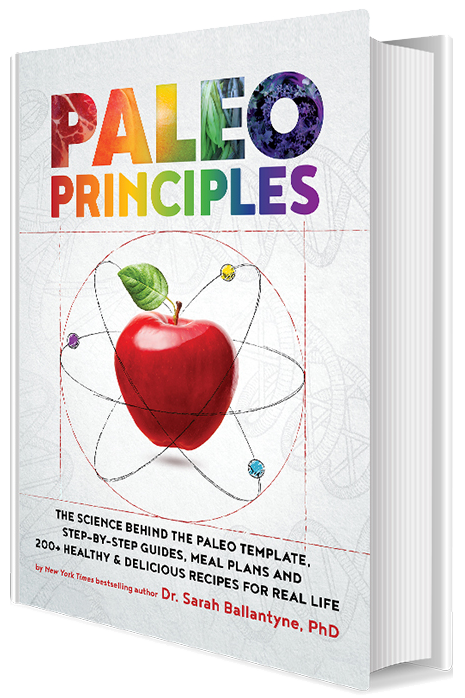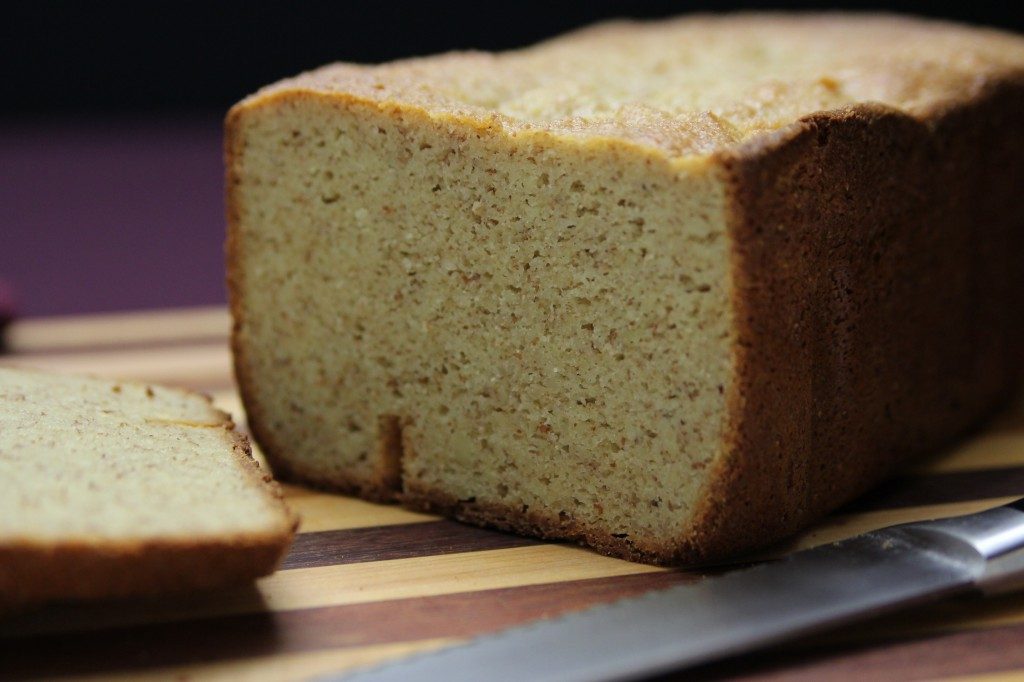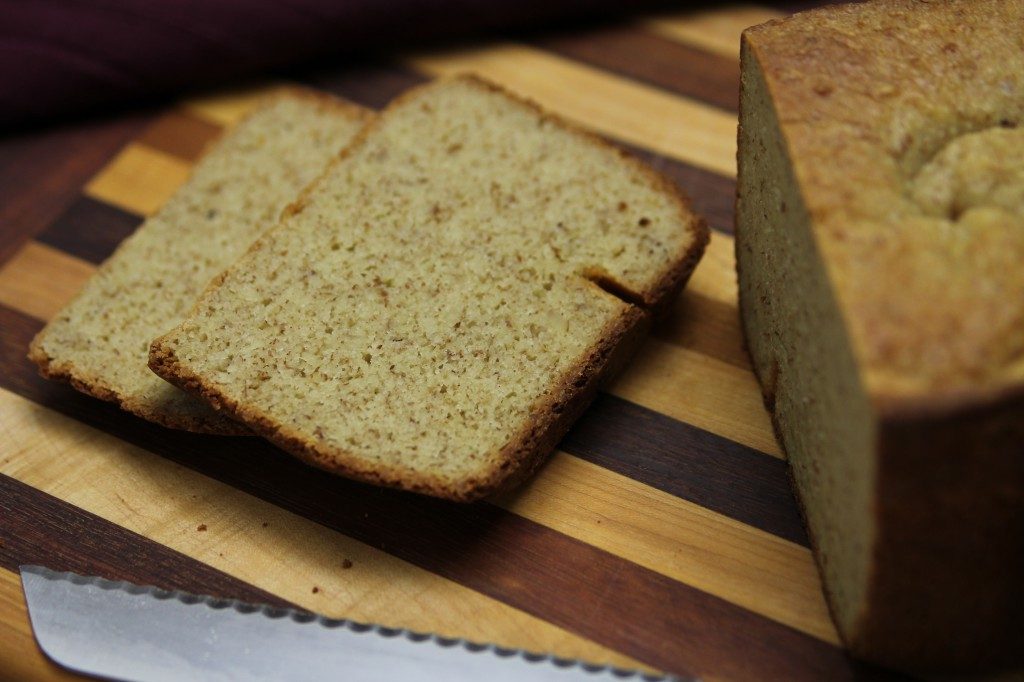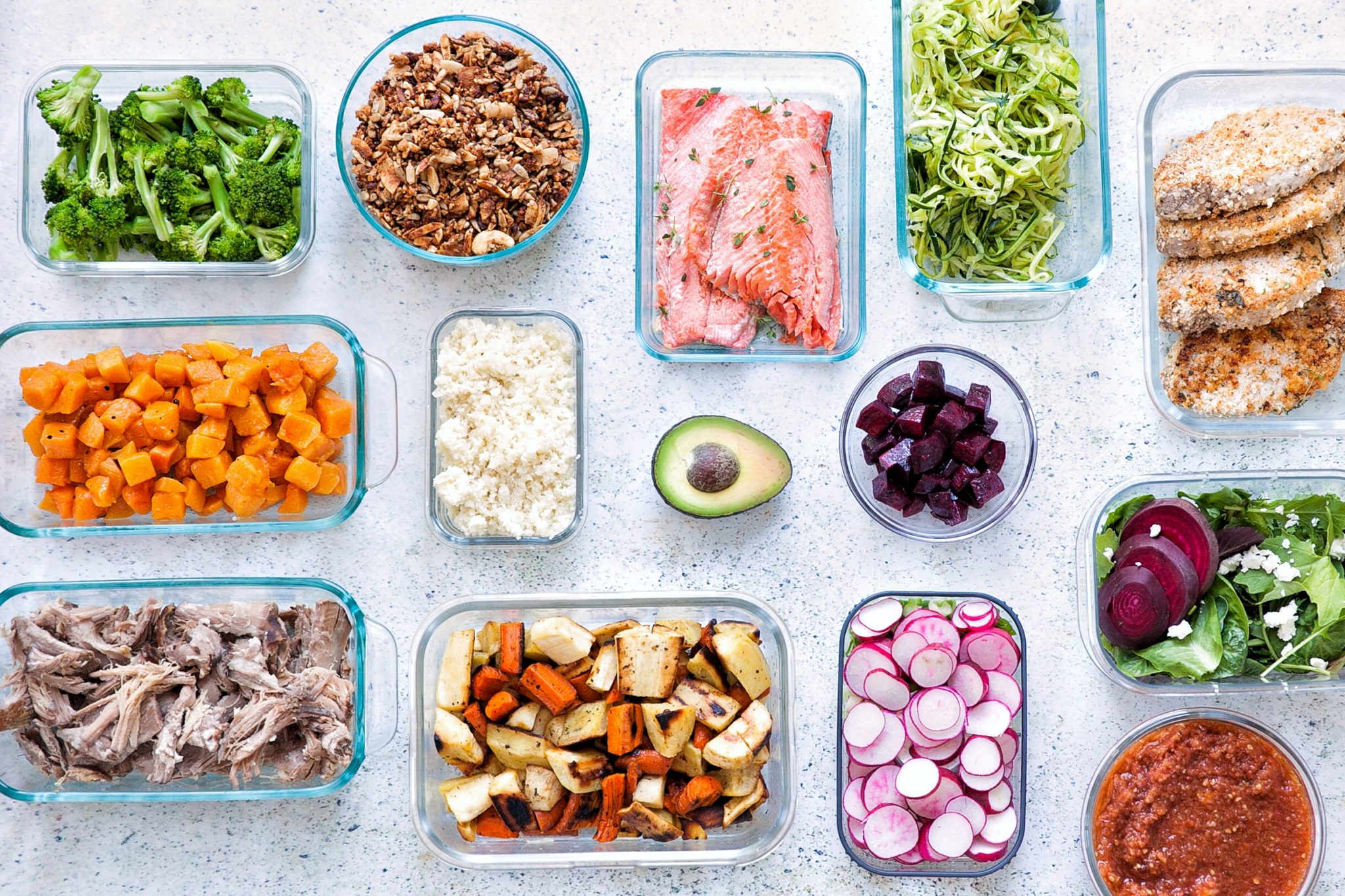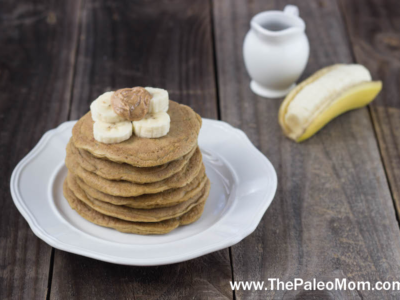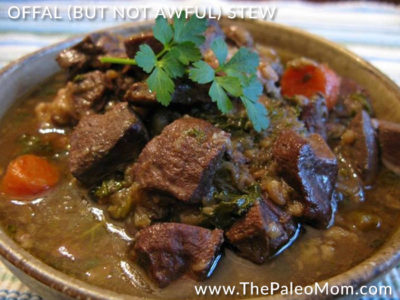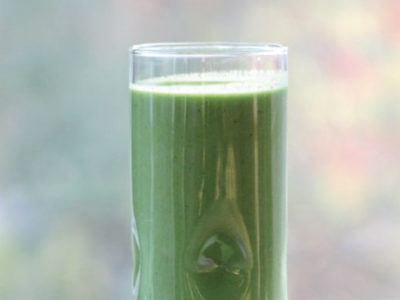A good Paleo bread recipe is worth its weight in gold. I pride myself on my Paleo bread recipes, especially those that utilize yeast (check out my post Is Yeast Paleo?) since the flavor and texture is so, well, bread like! For anyone with picky kids they are trying to transition or who is having issues with the transition to Paleo themselves, having a real bread that is made with Paleo-friendly ingredients can make all the difference in the world.
Yeast-based Paleo bread is one of the few recipes that I have developed that I make frequently. I mean really frequently. It takes a week to ten days for us to go through a loaf. It is a staple breakfast food for my oldest (who had the hardest time with the transition to Paleo and still clings to a few Paleo versions of her old staples) and an occasional breakfast food or treat for my youngest and husband. So, I’ve had plenty of opportunity to tweak and play with the recipe over the nearly one year since I posted the original version.
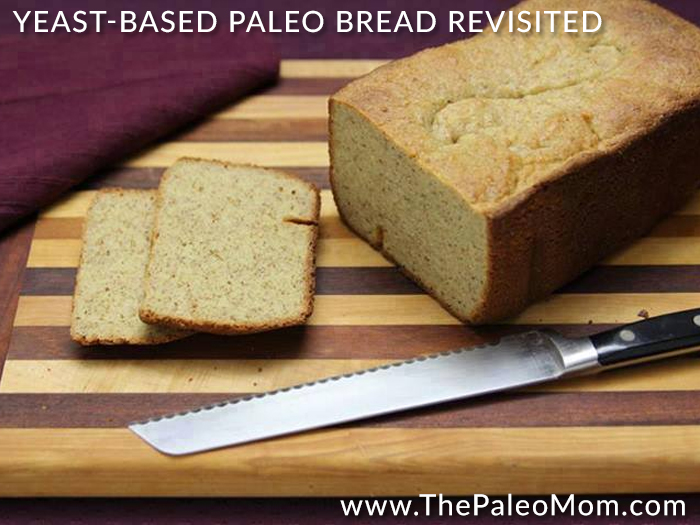
One of my priorities was to develop a version of my original yeast-based Paleo bread that didn’t include flax seed. This is because I have learned that flax is very high in phytoestrogens, chemical compounds that have the ability to mimic estrogen in the human body even as absorbed from dietary sources. And while I don’t worry about the occasional bit of Paleo baking that includes flax, I do worry about the daily consumption of flax for my growing girls. Doing away with the flax introduced all kinds of issues with texture, which took quite a bit of experimentation to sort out. The secret turned out to be to use half very finely milled blanched almond flour (such as Honeyville Farms or JK Gourmet) and half courser milled almond meal (the best was the almond flour I bought locally from NaturAlmond but making my own by processing whole almonds in my food processor worked well too).
The other issue with the original bread recipe is that it made a fairly squat loaf. While this didn’t really matter that much for our purposes, a taller loaf means the bread lasts longer and it’s a more familiar size/shape for all of you!
My Bread Machine does 2-pound loaves, but I am very confident this would work in a 1.5-pound loaf machine (I would suggest cutting the recipe in half for a 1-pound loaf machine). As with all gluten-free bread recipes, it doesn’t rise much. That’s okay. It also will never have a dome top. That’s okay too. I make this bread in a Bread Machine, which is certainly the easiest way to make this bread (gluten-free bread can be tough to get a pretty surface with made the old fashioned way, but it’s certainly possible!).
As with all homemade bread recipes, the temperature, humidity and altitude of your kitchen can impact how the bread rises. You may need to subtract or add 1 Tbsp (or even 2 Tbsp!) of water to this recipe to make it work in your kitchen. You’ll know to subtract a little water if your loaf is a little concave on top (like a trench). You’ll know you need to add water if the top is crumbly looking. You can optionally use Mineral Water to add a little extra rise and lightness to your loaf, but the difference is small compared to regular water, which is what I am in the habit of using.
Ingredients:
- 7/8 cups Water (Mineral Water gives a slightly better rise but it not necessary) (if you don’t have a measuring cup this accurate, it’s the same as 220mL or you can measure 1 cup and remove 2 Tbsp)
- 3 eggs
- 1 tsp Salt
- 2 Tbsp Apple Cider Vinegar
- 2 Tbsp Honey
- ¼ cup Extra Virgin Coconut Oil, melted
- 3 cups Blanched Almond Flour (this works best with a very finely milled flour such as Honeyville Farms or JK Gourmet)
- 3 cups Almond Meal (this could be a coarser ground almond flour or you can make your own by grinding whole almonds in a food processor)
- 2/3 cup Tapioca Flour
- 2/3 cup Arrowroot Flour
- 2 tsp Active Dry Yeast
- Mix water, eggs, salt, honey, and vinegar in the bottom of your Bread Machine pan.
- Add coconut oil, almond flour, almond meal, tapioca and arrowroot flour on top of wet ingredients. Sprinkle yeast on top of the flour (or follow your bread maker’s directions).
- Use the whole wheat cycle on your Bread Machine if it has one (if not, just use a regular cycle). Very Important: My Bread Machine had a hard time mixing these ingredients because the dough is fairly stiff. Check during the initial knead that the ingredients are mixing well and none are sticking to the edge of the pan (if they are, use a spatula to gently push them down into the rest of the dough and maybe even help mix the dough, depending on your machine).
- Remove promptly after your Bread Machine is done. Enjoy!
If you want to bake this bread without a Bread Machine, these instructions reflect the best results reported by those of you who left comments on my original yeast-based Paleo bread recipe or sent me emails to report on your success:
- Proof your yeast by warming the water (should feel comfortably warm and not too hot) and adding the yeast to the water. You can do this in the bottom of your mixing bowl. It should start to foam in 5-10 minutes.
- Add the wet ingredients to the proofed yeast and stir
- Add your dry ingredients and stir to fully incorporate (you may want to use a standing mixer with a paddle attachment or you could do this by hand). It would be helpful if your ingredients were room temperature or slightly warmer.
- Pour the batter into a greased standard-sized loaf pan. Spread out the top evenly.
- Let rise in a warm corner of your kitchen for 45 minutes to 1 hour. A great way to rise bread is to put in on your oven with the oven off but the oven light on. Meanwhile, preheat your oven to 350F.
- Bake for 55-65 minutes, until golden brown on top and a toothpick comes out clean.

